New York Rangers: Five trades that got them in this mess

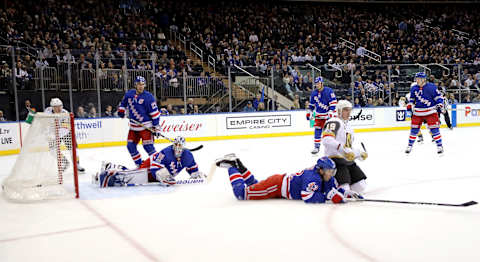
Over the last 10 years, the New York Rangers’ front office invested all their assets into building a champion contender. Unfortunately, their efforts failed, and the moves that they made are coming back to haunt them.
What do Jeff Gorton and Glen Sather have in common?
They both have made their fair share of poor trades.
They did that with good reason and good intentions. Both men believed that since 2012, the Rangers have had the capability of winning a Stanley Cup. Any good general manager would have done the same thing if they were in the same position.
The only thing the Rangers did differently was how they went about their trades, and how often they did it.
There were a lot of marquee players added in the 2010-2017 era, and while not all of those trades were bad ones, they have all left the farm system depleted of quality prospects.
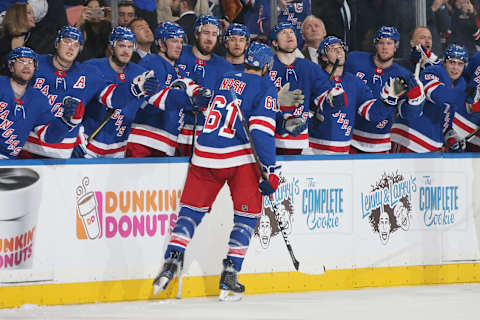
Rick Nash (2012)
While Rick Nash has been a useful player in his tenure with the Rangers and will surely bring back assets within the coming days, the trade started the trend of giving away first round picks. For those that don’t remember the trade, the Rangers sent Brandon Dubinsky, Artem Anisimov, Tim Erixon, and a 2013 first round pick to the Blue Jackets in exchange for Rick Nash, Steven Delisle, and a conditional third-round pick in 2013.
Dubinsky and Anisimov went on to have solid careers in their new home, and Erixon ultimately never became anything special. The problem was the first round pick. The Blue Jackets would go on to select Kerby Rychel who would ultimately turn out to be a bust. For the Rangers, they dodged a bullet on this trade.
They got a good return for what they gave up. However, the Rangers in the future would not be so lucky with mortgaging their future. The 2012 draft would be the last draft in five years that the Rangers had a pick in the first round.
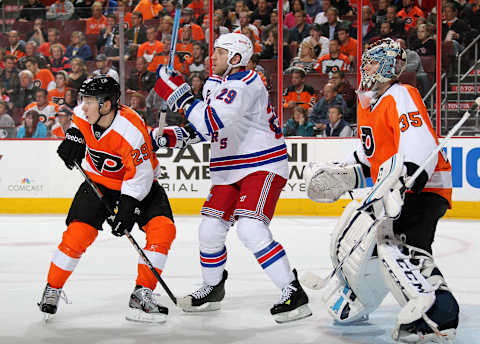
Ryan Clowe (2013)
Late into the lockout-shortened season, the mediocre but playoff-bound Rangers decided some grit would benefit them in the postseason. One of the many players whose name was floating around in trade rumors was Ryan Clowe.
Clowe was set to be a UFA at the end of 2013 season and it did not seem as if the Rangers had any intention of signing him when July 1st rolled around. Despite this, they traded a 2013 second round pick, a 2013 third round pick, and a 2014 conditional second round pick for Clowe.
With this trade, the Rangers would not have a pick in the 2013 draft until round four began. Once again, this cost the Rangers potentially three prospects who would be getting a good look at around this point in the season.
At the time, and especially now, it seems pointless to risk losing out on all these prospects in exchange for a rental. It would be more understandable if the rental the Rangers acquired was someone who hit the back of the net often, but Clowe is no sniper. And plus, Clowe suffered his second and third concussions of the season after being traded to New York.
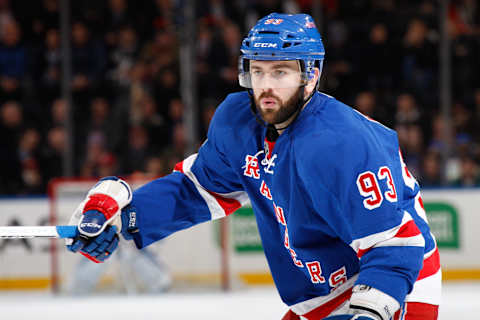
Keith Yandle (2015)
The year that the Rangers finished with the President’s Trophy meant a legitimate run at the Stanley Cup was ahead. Feeling like there can be something done to solidify the Rangers chances at ultimate glory, the team decided to go ahead and go “all-in” by acquiring Keith Yandle from the Coyotes.
In the trade that brought the offensive defenseman to New York, the Rangers traded yet another first round pick, a second-round pick, Anthony Duclair who at the time was a top prospect, and John Moore. Yandle played decently in his time with the Rangers, but the move did not look good when the Rangers were shut out in Game 7 of the Eastern Conference Final, ending their run.
Yandle became a UFA at the end of the 2015-2016 season, and because of this, the Rangers traded his draft rights to the Panthers. The return for Yandle’s rights was next to nothing compared to what the Rangers had to give up.

Eric Staal (2016)
The trade that sent Eric Staal to play alongside his brother Marc might be one of the worst moves to ever be executed by the Rangers. The Rangers organization still believed that they had a chance of winning the cup, and as the days went on, that reality seemed very unlikely. Was Eric Staal the answer? No, but the Rangers did it anyway.
The cost for an aging center that likely wouldn’t re-sign was high, and the Rangers were one of the teams dumb enough to even consider this move. The move sent highly touted prospect Aleksi Saarela, and two second-round picks from 2016 and 2017 respectively. There isn’t much more I can say about the draft picks because at the end of the day, draft picks are the equivalent of a coin flip. However, trading Saarela was a big mistake.
The Rangers find themselves in a bit of a situation since the start of the season. They have drafted centers in the 2017 draft, but they aren’t ready now. Maybe Saarela would not have been ready either, but the Rangers couldn’t even get a look at him in the organization because they traded him when he was just 19 years old.
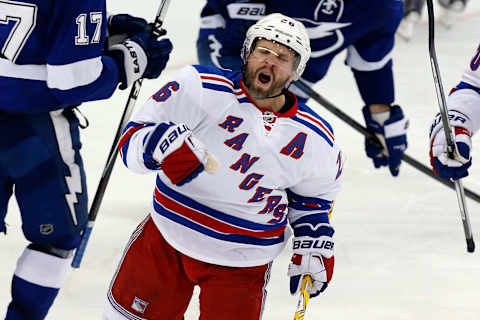
Martin St. Louis (2014)
Martin St. Louis, despite his short time with the Rangers, was one of the greats to ever don the Rangers sweater. His overall commitment to the organization and helping those around him get better is unparalleled and is undoubtedly worth something. However, it is not worth what the Rangers gave up for him.
In exchange for Ryan Callahan and two first-round picks, the Rangers acquired St. Louis. Both of those picks traded to Tampa Bay ended up in the hands of Islanders who used one of those picks to draft Joshua Ho-Sang. While Ho-Sang and his off-ice behavior are less than desirable, it can not go unnoticed that the Rangers still could have gotten someone with a plethora of potential.
Next: New York Rangers: Playing out the season like a professional
Ultimately, the Rangers sacrificed the future, and now the future looks grim. From the way it looks, it might be years before the Rangers are in the hunt for a Stanley Cup. Hopefully, management builds a team right this time, relying on youth over experience.